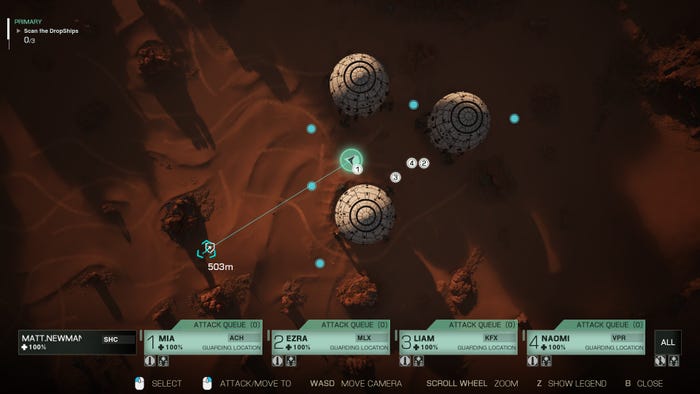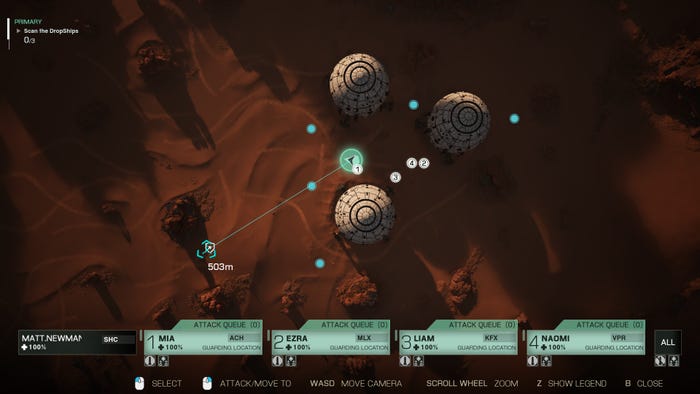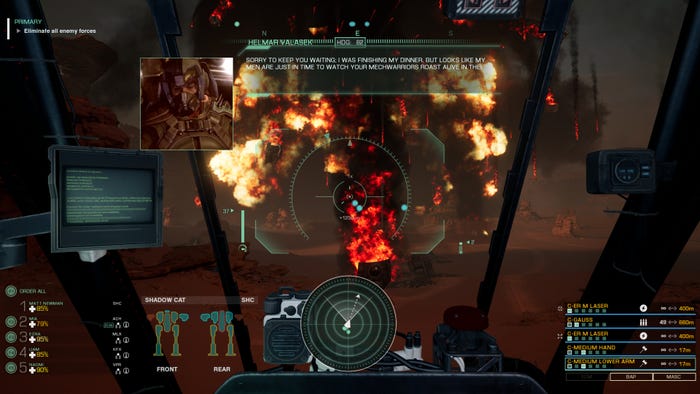
Clan Steiner. The Succession Wars. The Republic of the Sphere. If these ominous proper nouns carry any significance for you, you are either up to your eyeballs in BattleTech minis from Catalyst Games, or you vaguely know them from the background chatter heard in the many MechWarrior games (or 2018’s BattleTech from Harebrained Schemes).
The MechWarrior video game series has been through the hands of many studios over the years (Activision, Zipper Studios, etc.) but it’s now shepherded by Canadian developer Piranha Games. And as CEO Russ Bullock mentioned in a meeting at the 2024 Game Developers Conference, it’s a franchise beloved by many players who couldn’t tell you a thing about the story.
“Unless you’re a pen-and-paper player who’s read the hundreds of novels…that deep storyline has never been presented in the video games,” he said.
That “deep storyline” Bullock described was originally documented by Catalyst Games to serve as the backstory for its tabletop wargame. It accrued enough interest to be packaged in various novels and novellas hawked to players eager to know more about the factions they were fighting for.
The setting runs through the years 2571 to 3171 AD, with no one single character or faction considered the “primary” point of interest in the narrative. But with MechWarrior 5: Clans, Piranha is gambling that bringing one of those big “historical” moments to life will help foster a new generation of MechWarrior fans.
MechWarrior 5: Clans experiments with new mechanics to appeal to players new and old
During a demo for MechWarrior 5: Clans, where a squad of young cadets from clan Smoke Jaguar are dropped into their first real mission as MechWarriors, Bullock and narrative director Chris Lowrey showed off what was described as a more approachable, console-friendly mech piloting system in a level that guided players through big, bombastic setpieces.
“More approachable” doesn’t necessarily mean “less complex.” The game introduces two key systems that move the strategic depth laterally from cockpit management to squad management. Bullock demonstrated how players will be able to swap between members of their squad to access different types of mechs in the space of a mission. In previous MechWarrior games, players were confined to the steel cockpits of the unit they deployed with.
There’s another clever mechanic being introduced too: a simple real-time-strategy interface that gives players more agency over where to direct their squadmates.

Image via Piranha Games.
That system goes hand-in-hand with a traditional squad system management tech: a command wheel that allowed players to either issue general commands or point-and-direct units to a certain point. Combining the two systems is a good example of how Piranha can simplify the MechWarrior experience while opening new depth for the diehard fans.
Speaking of diehard fans though, it was important to dig into what this kind of development shift means for Piranha. When dealing with an audience used to the simulation side of MechWarrior, that means fulfilling the power fantasy of being a mech commander choosing different missions, balancing the costs and profits of running a MechWarrior operation, and juggling the damage and power systems while piloting their chosen mech.
That power fantasy was what fueled the open-world, narrative-light development of MechWarrior 5: Mercenaries. It’s a fantasy Bullock personally wanted after growing up with the classic MechWarrior games that were based on those gameplay pillars.
But as Piranha studied the Mercenaries playerbase, they saw that wasn’t all players wanted. “You start to discover other fantasies people have. We started to see people saying ‘this is amazing, but boy wouldn’t it be great to finally have a MechWarrior game that truly delivers the richness of the BattleTech lore, and have a BattleTech novel come to life.'”
Experienced developers will know that lore, no matter how juicy, does not count as proper storytelling. But Lowrey was game to break down how picking a specific period from the world of BattleTech shook up Piranha’s development shift from “open” game design to “linear” design.
The Clan Invasions introduce objectives, motives, and opportunities
Because MechWarrior 5: Mercenaries needed to let players pick and choose what kinds of jobs they would take, and which factions they would support, the game was forced to lock into a specific point in fictional BattleTech history that didn’t involve dramatic swings in power: The Succession Wars. It needed to be an open point in time where players could shape battles however they wanted.
Clans has a different task to fill. With linear progression, Lowrey needed to dig into his beloved sourcebooks and library of novels to find an approachable saga players unfamiliar with the story could latch on to.
Enter: The Clan Invasion. It’s a bit of a “fall of Rome” vibe where a stagnant empire controlling the galaxy’s central core, the Inner Sphere, is overwhelmed by ragtag “Clan” nations from outside its territory.

Image via Piranha Games.
“The big draw of the Clan Invasion was this blitzkrieg by the Clans that just tore through a vast section of territory in the Inner Sphere within a very condensed period of time,” Lowrey explained.
We should take a brief detour here to touch on Lowrey’s road to narrative director. Check the credits for MechWarrior 5: Mercenaries, and you’ll find him listed as the game balance designer.
But when Piranha began shipping linear DLC updates for Mercenaries, they heard from players that they wanted more story content. Lowrey has been playing BattleTech for years (since he was eight years old!). He knows the novels. His time had come.
He’s rather humble about the shift though, saying he stepped into the role because it was “what the team needs right now.”
A fascinating market shift for Piranha Games
MechWarrior went from one of the premiere PC game franchises to a niche series in just under a decade. Remember, there was a point in the early ’90s where actor Jim Belushi starred in a video meant to lure would-be players outside of BattleTech centers into the BattlePods within.
But by the end of the ’90s shifts in the video game market meant the franchise didn’t have much staying power in the move to consoles. Then there’s that whole lawsuit about who is allowed to use which mechs in which products that was only settled in 2018.
Piranha Games began its stewardship of the franchise in 2013 with MechWarrior Online, and brought the series back to single-player development with Mercenaries. The strategy of appealing to the simulation-minded core ’90s audience definitely paid off, but there’s no reason it and Catalyst Games shouldn’t be ambitious in trying to pick up new target audiences.
Games Workshop keeps pulling it off with Warhammer, and R. Talsorian Games pulled it off with Cyberpunk, so there is some indication that hardcore tabletop properties can spread their wings through other mediums.
There’s just one final hurdle Pirhana needs to leap over: learning what exactly “approachable” means in the modern video game world. For as “deep” as the BattleTech universe is, it has more in common with classic science fiction and fantasy literature than modern mass market sci-fi.
Game of Thrones made it clear audiences are willing to pick up some of the dense baggage from that genre but has to be some tradeoff.
The demo Pirhana Games showed off made my eyes twinkle, but I am a mech-obsessed himbo who would do anything to jump into the cockpit of a Timber Wolf. Will new players be ready when commander Ibraham Ismiril dresses them down, calling them “the excrement of a failed semi-aborted batch from my bloodhouse, far from the pinnacle of humanity demanded by the clan geneticists that spawned you”?
Hopefully! It sent a shiver down my spine. Nothing like a hard-as-nails commander whose face looks like it was hit by a truck to get me in the mood for a military simulation. But there may be more bridges to build if Pirhana wants to make more mech nerds like me.
Game Developer and Game Developers Conference are sibling organizations under Informa Tech.






